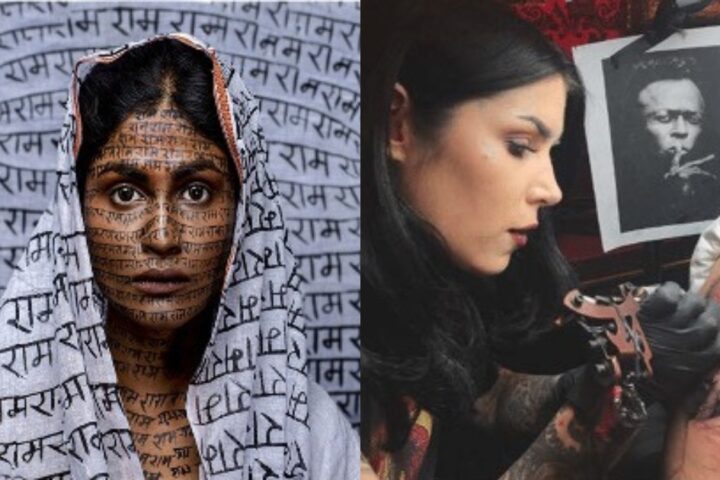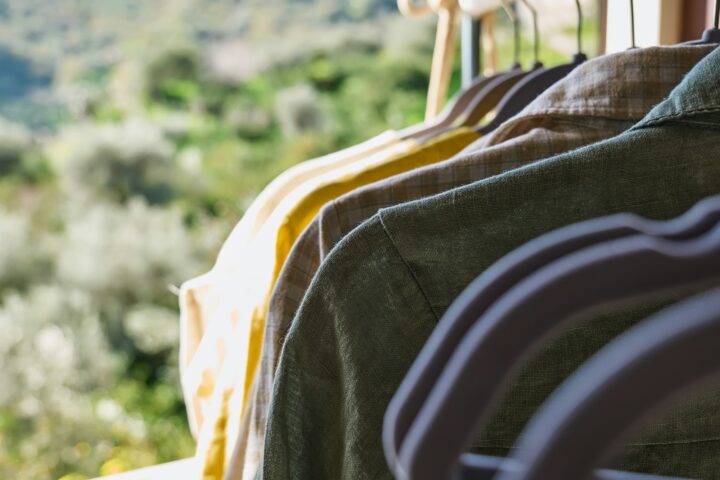The Judges’ dress could be an ancient apparel of sizable historical significance. It’s an emblem of authority of office-bearers which helps in introducing respect for the law. The Dress not only introduce the respect but also emphasizes the impersonal and fair approach of the Judge and which ultimately helps court establish who’s who and provide a degree of security to the wearers, through obscurity[1]. The command which a legal dress holds has been light by the words of Justice Stewart Fowler pertaining to the family court, “the reality was that once Judges Sat while not robes they weren’t regarded by many consumers as being Judges, and you had shoppers spoken language things like ‘I am not aiming to cop this. I’m waiting til the genuine Judge tags along”[2]. As the old saying goes, “Rome wasn’t in-built a day”, the respect, pride and envy for the legal dress failed to engineered long. It took centuries along to weave and enrich the trust and confidence of the individuals within the legal dress. Allow me to leaf into the chronicles of the legitimate dress.
The most seasoned officially made request of counselors at the English and Irish bar were Serjeant-at-Law, having been brought into reality as a collection of tip top gathering of attorneys who took a significant part of the work in the focal customary law courts, by Henry II. The customary apparel of a Sarjeant-at-law comprised of a coif, a robe and a furred cloak[3].
Only Sarjeant-at-Law could become Judges of the custom-based law courts, the lawful dress of the Judges kept that of Sarjeant-at-Law with the variety in cut and shade of the robe. From the 14th century ahead the Judges added dark skull cap to their head gear.
By the rule of Henry VIII the Judges had additionally taken up the pileus quadratus, a four cornered dark cap of limp, delicate material. The clothing for the Judges came to be perceived and normalized during the 2nd and 3rd quarters of the 14th century during the standard of British King Edward III. Essentially, it was for going to Royal Court. The texture and other material for robes was given to Judges as an award from the Crown. The Judges would wear violet robes in the colder time of year and green robes in the late spring. The green summer robe was obsolete by 1534 and just dark and violet robes were for the most part wore.
On 04/06/1635 , the Commission of Westminster passed a Royal Decree controlling legal dress. This report came to be known as the Judges’ Rules of 1635, planned to systematize the clothing worn by the legal executive. This guideline on lawful dress predominantly given that Judges should wear tragic shading dress; should wear white grass coif followed by a dark skull cap and dark cornered cap; should have two outfits, one red and the other dark or violet; should be in clean cut face and short hair; unfamiliar style and different frill were prohibited; should wear pair of groups – two short tails of white cambric hanging down from the front of the collar, and so forth The pair of groups, which is of white tone, addresses the “‘Tablets of the Law” or “‘Tablets of Stone”.
According to Christian conviction, tablets were utilized by Moses for writing the ten precepts. In this way, the pair of groups implies the maintaining of the laws of the God and of men. In the second and third many years of seventeenth century, during the rule of King Louis XIII the hairpieces start to expect the atmosphere of glory in France. It was stylish during the reign of King Louis XIV in France. In England, after the execution of Charles I in 1649 his child, Charles II escaped to France. After his get back from outcast to England and increase to the seat the French design of hairpiece wearing began making progress in England. By the 1680s, Judges and Barristers started wearing hairpieces as a piece of legitimate dress.
WIGs were not promptly acknowledged as a piece of legitimate dress. Judges and Barristers were hesitant to wear it. “Who might have assumed,” composed John Campbell (1799-1861), From the Earliest Times Till the Reign of Queen Victoria (1845), “that this abnormal trimming, fit distinctly for an African Chief, would be viewed as essentially vital for the organization of equity in the nineteenth century?”
Sir Frank Douglas MacKinnon (previous High Court Judge, England):
“WIGS are not actually part of the legitimate uniform, as robes are.Wigs are essentially a style in hat that was once general for noble men, and was surrendered by every one of them with the exception of priests, Judges and counselors, towards the finish of the eighteenth century. Priests, with the authorization of William IV, surrendered them in 1832; Judges and Barristers hold them still.”[4]
Courts are the sanctuary of equity. One ought to keep up its tranquility and virtue in each perspective. The dress mirrors a feeling of decency, truthfulness and reality of direction. Perhaps the most punctual record of significance to the legitimate dress could be followed to a passage dated 30/10/1697.
A Brief Historical Relation of State Affairs from September 1678 to April 1714 (printed 1854) gathered by the annalist and bibliographer Narcissus Luttrell (1657-1732).
It expresses that “Yesterday [that is, the primary day of the Michaelmas expression in the lawful calendar] Lord Chief Justice Holt requested all Barristers to show up next term in their appropriate outfits, and not in grieving ones, as they have done since the demise of King Charles; in any case won’t hear them.”[5]
The unmistakable uniform of the legitimate calling was an acknowledgment and a norm of control in the courts. Advocates were not to be heard in court without WIGS and outfit.
Curiously, in Chhaganlal Ishwardas Shah v. Emperor, [6] the Bombay High Court was thinking about whether or not inappropriate dress in court can establish disdain of court. For this situation, an assessor had showed up at a Session Court in Nadiad wearing a “paheran”, cap and scarf. He had been fined Rs. 3 for being inappropriately dressed and for not wearing a coat. Contradicting the Sessions Judge, Beaumont,
C.J. of the Bombay High Court stated, “all things considered, that is fairly a matter of taste“. The Court found that there is no standard with respect to the dress of assessors, and aim of the assessor was “to safeguard his own solace, not to affront the Court“.
Preceding in a similar line, in United States of America the law doesn’t determine a specific dress for lawyers. Be that as it may, in consonance with morals and expert necessity it is required from lawyers to wear business dress keeping up the etiquette in the court and sensibly identified with the appropriate organization of justice. So likewise, ladies lawyers are required to wear proper and humble dress[7]. DBN (pseudo name) a lawyer at law was reproached for not appropriately dressing and showing up in the Court[8] without noticing the dress code[9]. This isn’t an end. The sign “night wear are not proper clothing for District Court“, was posted external the court of Judge Craig Long, Columbia County, Pennsylvania. The Judge got constrained to hang the sign as individuals were not dressing suitably for court[10].
During this lockdown period the actual court hearing has made ready for virtual court hearing. An episode happened in the virtual official courtroom S.P. Sharma of the Rajasthan High Court. Supposedly, a supporter seemed to contend a bail matter through videoconferencing in his vest. Making a solid issue with this, Justice Sharma deferred the conference and called upon the Bar Association to guarantee that every one of its individuals cling to an appropriate clothing standard. It isn’t that clothing regulation in the Court is just ordered for the Judges and attorneys. Indeed, even administrators and regular public is relied upon to be in calm and respectable dress as it is an emblematic of specific things. In an episode, a senior official of the Rajasthan Government was reprimanded by the Bench of J. Chelameswar and Sanjay Kishan Kaul, JJ. of the Supreme Court of India for showing up in a wrong dress. So at that point, two Czech nationals – a man wearing dark shorts and vest and a lady in a short skirt and sleeveless top – were fined Rs. 2500 for not dressing as expected in the court premises.
Having progressed significantly it is important to comprehend what are the view of lawful dress today. What’s people’s opinion on legitimate dress? In a contention for their conservation it is peddled that it represents the authority of officeholders, helps imparts a regard for the law, underscores the generic and unengaged methodology of the Judge, and so forth In a contention against their conservation it is pointed that it scare casualties and witnesses, energize gaudiness in lawful experts, incite mocking at the general set of laws as obsolete and in reverse looking[11].
Ruler Justice Taylor[12] in a meeting with the BBC in 1990 said he accepted that “at a stroke we could incapacitate a decent arrangement of public misconception of the lawful calling on the off chance that we quit wearing hairpieces and outfits in court”.[13]
I may summarize with the perspectives on Chief Justice Austin Asche[14]:
“A many individuals would say so what, that is the thing that you need, you need a cordial court. Well indeed, you do, however there is an inclination of pride and an inclination among the public too that an individual who is staying there without hairpiece and outfit or whatever isn’t exactly pretty much as significant as the individual sitting up there in Wigs and outfit.… “[15]
[1] Court Working Dress in England and Wales, Lord Chancellor’s Department Consultation Paper (May 2003).
[2] Helen Rhoades and Shurlee Swain, A Bold Experiment? Reflections on the Early History of the Family Court (2011) 22(1) Australian Family Lawyer 11, 20.
[3] Pulling (1884) p. 214.
[4] Sir Bernard Sugerman, The Wearing of the Wig (1973) 47 Australian Law Journal 39.
[5] Legal Habits : A Brief Sartorial History of Wig, Robe and Gown, by Good Books (G.B. Publications Ltd.).
[6] (1844) 8 JP Jo 390.
[7] Sandstorm v. State of Florida, 309 So 2d 17 (Fla App 1975).
[8] 193 Peck v. Stone, 32 AD 2d 506, 304 NYS 2d 881 (1969).3 SCC OnLine Bom 96
[9] J. Rozenberg, What Price Tradition? Time for a Change in Court Dress? (1996) 28 Bracton Law Journal 75.
[10] Keith John Austin Asche, AC, QC was the third Chief Justice of the Supreme Court of the Northern Territory,
Australia.
[11]Court Working Dress in England and Wales, Lord Chancellor’s Department Consultation Paper.
[12] Peter Taylor, Baron Taylor of Gosforth was Lord Chief Justice of England from 1992 until 1996.
[13] J. Rozenberg, What Price Tradition? Time for a Change in Court Dress? (1996) 28 Bracton Law Journal 75.
[14] Keith John Austin Asche, AC, QC was the third Chief Justice of the Supreme Court of the Northern Territory, Australia.
[15] Helen Rhoades and Shurlee Swain, A Bold Experiment? Reflections on the Early History of the Family Court (2011) 22(1) Australian Family Lawyer 11, 20.
Author: Shubhangi Baranwal
Currently pursuing her LL.M in Constitutional Law, batch 2020-2021 from Maharashtra National Law University , Aurangabad and currently member of Young Division, Law department at Legal Desire. She had completed her B.A+LL.B(H.), batch 2015-2020, from School of law, Galgotias University. She holds an expertise in the area of Constitutional Law. She had participated in various competition such as moot court competition, MUN, law quizes, debate etc , had interned under the chamber of senior advocates during these 5 years of her journey. She did worked as a judicial Intern at Lucknow Bench, Allahabad High Court and as a Law Intern at UPSLSA, Lucknow. Apart from exploring the new dynamics of law, Shubhangi finds keen interest in sketching, painting, photography and craftwork.










